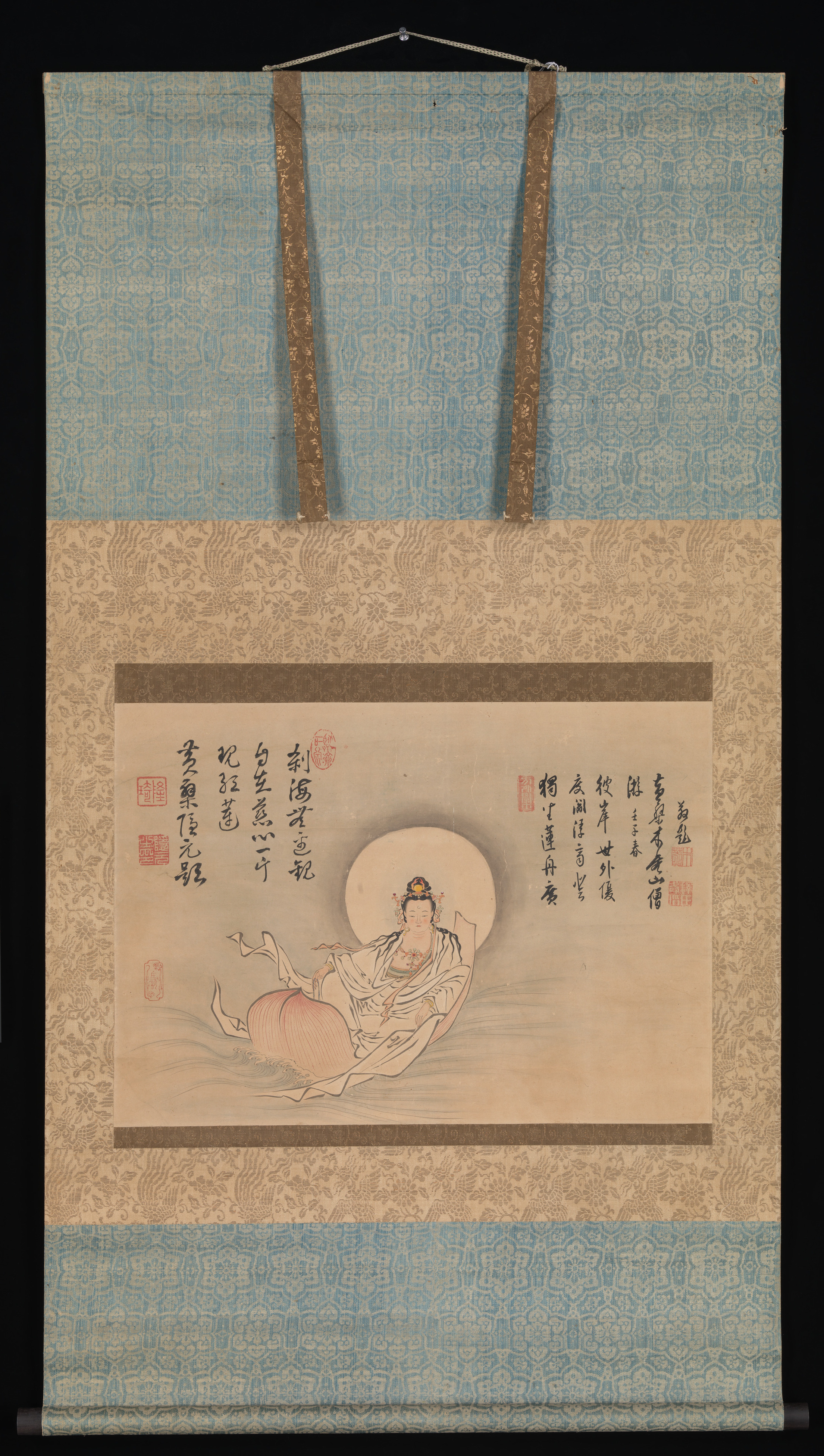Kannon on a Lotus Petal
Painting by Shōzan Gen’yō 照山元瑶 Japanese
Inscription by Yinyuan Longqui (Ingen Ryūki) 隱元隆琦 Chinese
Inscription by Muan Xingtao (Mokuan Shōtō) 木庵性瑫 Chinese
Not on view
This painting of Guanyin (Kannon, in Japan) encapsulates the remarkable history of the Ōbaku school of Zen, which was brought from China to Japan in the seventeenth century. The school’s religious and political influence would grow to hold sway even in the imperial palace in Kyoto. The painting is by an imperial princess, daughter of the highly cultured and spiritually inclined Emperor Go-Mizunoo. Genyō trained in Zen teachings and meditation practice in her youth, and then encouraged her father to support Ingen and his Ōbaku sect. The two inscriptions on this painting are by Yinyuan (on the left) and his top pupil Muan.
Due to rights restrictions, this image cannot be enlarged, viewed at full screen, or downloaded.
This artwork is meant to be viewed from right to left. Scroll left to view more.



